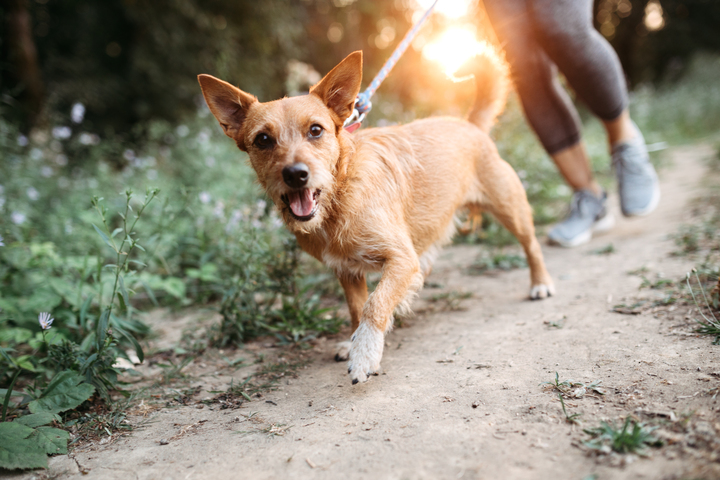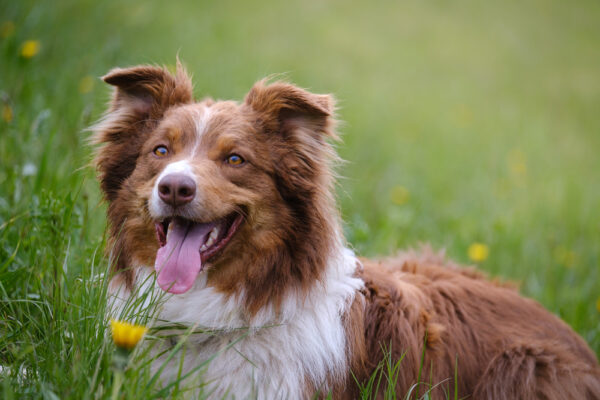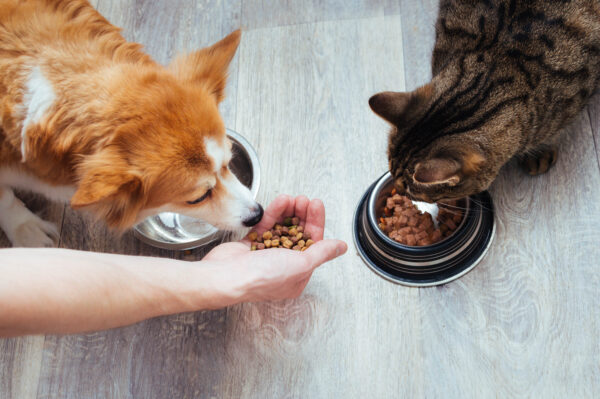The clocks change this weekend, meaning lighter evenings are finally back on the cards. Milder temperatures make it a great time to review your dog walking routine as well as your pet’s parasite plan, so here are some pointers on outdoor essentials and how to get the most out of your upcoming walks.
Getting the most out of lighter evenings
Being outside in the fresh air is an instant mood booster, even more so when the sun is shining. As well as being a great way for humans to stay fit, regular walks are also great for your dog. Not only do they work to improve your dog’s general behaviour when out and about, walks also eliminate the risk of weight gain, diabetes and osteoarthritis.
Get organised
Being prepared will help you get the most out of your walk, whether that’s finding your dog the most comfortable collar, a secure lead or fitting them with an ID tag for extra security. When it comes to leads, it’s personal preference. You can pick from a flexi option that extends, or if your dog needs a little more guidance, a harness will give you more control. If it’s been a while and your dog isn’t as fussed about long walks as you are, be ready with some treats, rewarding them as they go and using positive reinforcement. Last but not least, poo bags! A non-negotiable when walking the dog.
Start slow
If your walks have been cut short over the last few months because of the darker, colder mornings and evenings, your pooch may have lost the knack for long strolls. To build up their endurance, it’s a good idea to increase the pace and distance very gradually, closely monitoring them before and after they’ve been out to gauge if it’s right for them. Making sure they’re comfortable is important, so keep a close eye. If longer walks start to pose a real problem and your pooch is being stubborn, try some throw toys or a ball to make the experience more stimulating and fun.
For seasoned strollers
If your dog has missed longer stretches of outdoor activity, and you want to keep the momentum going, why not take them on a run with you? Start slow and steady and make sure your dog isn’t struggling, increasing the distance as you go, and if you’re going a little further than usual, remember to take some water for them (as well as a congratulatory treat for their hard work!).
Tackling fleas and ticks
Targeted collars or spot-on treatments (more on these below) are quick and effective ways to tackle parasites, but understanding the life cycle can help eliminate the risk altogether. Here are the basics.
When it comes to fleas, they have a life cycle that spans four stages. They start as an egg, develop to larva, progress to pupa, and then, finally reach adulthood. When fleas are pupae, they can wait up to an entire year for a host before they transform into an adult. This adult flea can then attach to your furry friend and feed off their blood.
Distinguishable as small, rounded arachnids, ticks also feed on your pet’s blood. They can vary in size, and resemble a coffee bean when engorged with blood. When trying to spot them on your pet, you’ll locate them in areas with less hair, around the ears, face or on their tummy. Tick season goes from March to November, so being aware of the risk is particularly important during peak months.
Taking action and protecting your pet
Look to products that are fast, effective and convenient, such as spot-on pipettes. We recommend Frontline Plus and Advantage as great choices for parasite prevention. For extra protection, a Seresto collar will protect your dog against fleas and ticks for 7-8 months. For pets that already have fleas, we like Capstar tablets as they will kill them in as little as 15 minutes and prevent eggs from developing. But there are many great products available, so there should be a solution that’s perfect for your pet.
Lastly, be sure to check your pet for ticks regularly, using a tick remover when called for.
Do you need some pointers on the best treatment for your pet? Our Animal Medicine Advisors are here to assist with free advice. You can contact us for suggestions, recommendations and a helping hand.



